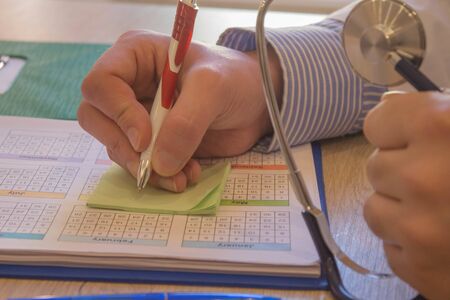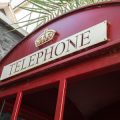Introduction to Astrology in British History
Astrology has woven itself into the fabric of British history for centuries, leaving a lasting impression on both popular culture and intellectual life. While today’s birth charts and horoscopes are often viewed as personal curiosities or light entertainment, their roots in the United Kingdom run deep. From the medieval courts to contemporary living rooms, astrology has captured the imagination of Britons across all walks of life. Historically, it was not uncommon for monarchs and nobility to consult court astrologers before making significant decisions, reflecting astrology’s perceived influence over fate and fortune. Meanwhile, ordinary people turned to astrological almanacs for guidance on planting crops, choosing auspicious dates for marriages, or simply seeking reassurance during uncertain times. This enduring presence highlights astrology’s role as more than mere superstition; it represents an evolving cultural phenomenon that continues to shape how many in Britain understand themselves and their place in the cosmos.
2. Early British Engagement with Astrological Practices
When exploring the historical roots of birth charts in Britain, it is essential to trace the arrival and development of astrology across the British Isles. Astrology was first introduced to Britain through a blend of Roman influence and later, Christian monastic scholarship during the early medieval period. The earliest known references to astrological beliefs can be found among the Druids and Celtic tribes, who observed celestial events for ritualistic purposes. However, it was during Roman occupation (AD 43–410) that astrology began to take on more structured forms, as Roman soldiers and settlers brought their own traditions of star-gazing and planetary interpretation.
Astrology’s real foothold in Britain emerged in the medieval era, particularly between the 12th and 16th centuries. This period saw a surge in interest in astrological texts translated from Arabic and Latin sources, often preserved in monastic libraries or taught at universities such as Oxford and Cambridge. Key figures like Roger Bacon (1219–1292), a renowned English philosopher and Franciscan friar, advocated for the study of astrology alongside astronomy as essential sciences. The use of birth charts—known then as “nativities”—became increasingly common among nobility, clergy, and even monarchs seeking guidance on matters ranging from health to political strategy.
| Period | Key Figures | Notable Events/Practices |
|---|---|---|
| Roman Britain (AD 43–410) | Unknown Roman practitioners | Introduction of structured astrology; blending with local traditions |
| Early Medieval (5th–11th c.) | Celtic Druids (pre-Christian influence) | Celestial rituals; limited written records |
| High Medieval (12th–14th c.) | Roger Bacon; Adelard of Bath | Translation and study of Arabic & Latin astrological texts; university curricula |
| Late Medieval (15th–16th c.) | John Dee; William Lilly (early modern) | Widespread use of natal charts among elites; astrological almanacs published |
The engagement with astrology during these times was not merely academic or mystical—it was embedded in daily life and decision-making at both personal and state levels. Birth charts were drawn up for royal children, while astrologers gained roles as advisors at court. This rich tapestry of early British astrological practice laid the groundwork for how subsequent generations would perceive their astrological heritage, embedding birth charts firmly within both popular culture and intellectual discourse.
![]()
3. Birth Charts and Royalty: A Regal Tradition
Throughout British history, the fascination with birth charts has not been limited to common folk; it has flourished most prominently within the monarchy and aristocratic circles. The royal courts of England, Scotland, and later Great Britain often employed astrologers whose primary task was to cast horoscopes for kings, queens, and their heirs. This regal tradition can be traced as far back as the medieval period, when monarchs like Elizabeth I reportedly consulted her personal astrologer, John Dee, before making pivotal decisions regarding statecraft and diplomacy.
The use of birth charts among British royalty went beyond mere curiosity. These celestial maps served as tools for strategic planning—guiding everything from the timing of coronations to marriage alliances and even military campaigns. In many cases, court astrologers would interpret planetary positions at the time of a royal birth to forecast the destiny and character of future rulers. Such practices were seen as a mark of sophistication and intellectual engagement with the wider currents of European thought.
Aristocratic families followed suit, commissioning natal charts for newborns in hopes of gaining insights into their childrens futures and aligning them advantageously within the intricate web of noble alliances. The tradition persisted well into the Georgian and Victorian eras, albeit with varying degrees of seriousness. While some viewed astrology as genuine counsel, others embraced it more as a fashionable pastime or a means to demonstrate cultural refinement.
This intertwining of astrology with British high society contributed significantly to how birth charts are perceived today. The regal endorsement lent astrological practices an air of legitimacy, embedding them within Britain’s cultural heritage. Modern attitudes towards birth charts in Britain—whether sceptical or enthusiastic—cannot be separated from this long-standing association with royalty and social elites.
Astrology in Popular British Culture
In the United Kingdom, astrology has woven itself into the everyday fabric of society, especially through the popularisation of birth charts. The British relationship with astrology is both pragmatic and whimsical, reflecting a culture that balances scepticism with curiosity. From the early twentieth century onwards, astrological readings began appearing in mainstream media, most notably in newspapers and magazines. This marked a significant shift: what was once considered a specialised or mystical pursuit became accessible to millions of Britons over their morning tea.
One of the pivotal moments in this cultural integration occurred in 1930 when the Sunday Express published one of the first regular horoscope columns. Since then, almost every major UK newspaper and tabloid—from The Times to The Sun—has carried daily or weekly horoscopes. These columns distilled complex astrological concepts into bite-sized predictions based on sun signs, making astrology approachable for those without prior knowledge.
Astrology at the Heart of Community Life
Beyond print media, astrology found its way into local traditions and community events. Village fairs and summer fetes across Britain often feature astrology booths alongside cake stalls and tombolas. Here, astrologers offer quick birth chart readings, inviting individuals to explore their personalities and destinies while supporting local causes. Such events have played an understated but vital role in normalising astrology as part of British life, moving it from the margins to the mainstream.
Ways Astrology Has Entered Everyday British Culture
| Medium | Description | Cultural Impact |
|---|---|---|
| Newspaper Horoscopes | Daily/weekly forecasts based on sun signs | Brought astrology into homes across all social classes; created shared cultural references |
| Village Fairs & Fetes | On-site astrologers offering birth chart readings | Made astrology interactive and community-focused; fostered local interest |
| Radio & TV Shows | Segments or call-ins for live astrological advice | Extended reach to diverse audiences; increased conversational awareness of astrology |
| Bookshops & High Street Stores | Shelves dedicated to astrology books and guides | Encouraged self-learning; positioned astrology as a legitimate hobby or interest |
A Unique Blend of Scepticism and Engagement
The British approach to astrology is marked by a blend of humour and critical thinking. While some treat birth chart readings with earnest belief, others see them as light-hearted entertainment or conversation starters. Regardless of stance, few can deny that astrology—and specifically birth charts—have become an enduring element of British popular culture, influencing everything from small talk at pubs to the advice offered in agony aunt columns.
5. Contemporary British Attitudes towards Astrological Heritage
Modern British attitudes towards astrological heritage are notably diverse, reflecting the country’s long-standing interplay between tradition and rational inquiry. There is a unique blend of scepticism, nostalgia, and curiosity that characterises the contemporary view on birth charts and astrology in general.
Scepticism Rooted in Rationalism
Britain’s historical contributions to science and critical thinking—epitomised by figures like Isaac Newton and Charles Darwin—have fostered a culture where empirical evidence is highly valued. For many Britons today, astrology occupies a curious space: it is often met with scepticism or outright dismissal, especially within academic or scientific circles. Birth charts are seen by some as relics of a less enlightened era, interesting but lacking factual basis. This rationalist perspective is particularly strong among younger generations and those with higher education backgrounds.
Nostalgia for Bygone Traditions
Despite this scepticism, there remains a nostalgic fascination with the past. Britain’s rich history of folklore, mysticism, and esoteric practices—including astrology—is sometimes viewed through a romantic lens. Media portrayals of historical eras, such as the Victorian period or the Elizabethan age, often highlight the role of astrologers and their influence at court. For some Britons, exploring astrological heritage provides a comforting link to national identity and cultural continuity, evoking images of ancient manuscripts and candlelit consultations.
Curiosity and Pop Culture Influence
The resurgence of astrology in popular culture has also had a noticeable effect. Social media platforms, lifestyle magazines, and online horoscopes have made birth charts accessible to a new generation, often reframed as tools for self-discovery rather than fortune-telling. This curiosity does not always imply belief; rather, many British people approach astrology playfully or experimentally. It becomes a topic for conversation at parties or an ice-breaker among friends—part of the broader trend towards mindfulness and personal reflection.
The Ongoing Dialogue
This interplay between scepticism, nostalgia, and curiosity shapes how Britons engage with their astrological heritage today. While few may treat birth charts as definitive guides to life, many appreciate their historical significance and enjoy exploring what they reveal about both individuals and society at large. In this way, British attitudes reflect a pragmatic yet open-minded engagement with the complex legacy of astrology.
6. Conclusion: The Lasting Impact of Astrological Traditions in Britain
The historical context of astrology in Britain has woven a distinctive tapestry that continues to inform how birth charts are approached and interpreted today. From the earliest medieval manuscripts to the rich intellectual debates of the Enlightenment, British society has developed a pragmatic yet inquisitive relationship with astrology. This unique approach blends traditional reverence with sceptical inquiry—a hallmark of British cultural heritage. Modern Britons often view their astrological past not just as an esoteric curiosity but as an integral part of their broader historical narrative, encompassing both scientific advancement and mystical exploration. In contemporary Britain, birth charts are appreciated for their personal insight and symbolic value, shaped by centuries of evolving attitudes toward fate, individuality, and the cosmos. As a result, the British outlook on astrology is neither wholly credulous nor entirely dismissive; instead, it reflects a nuanced appreciation rooted in history. This blend of tradition, critical thought, and enduring fascination ensures that astrology remains a living thread in the fabric of British culture, connecting the present generation with its storied past.


